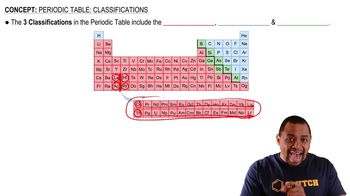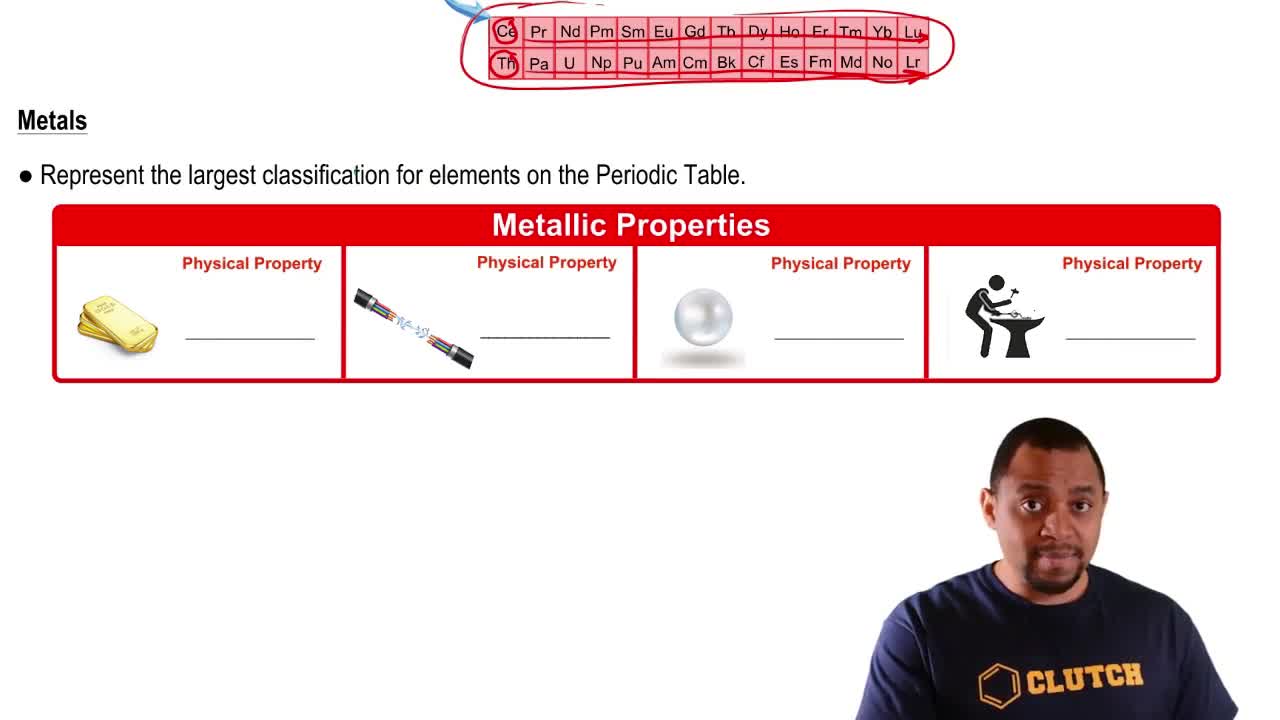Here are the essential concepts you must grasp in order to answer the question correctly.
Periodic Table Classification
Elements are classified into metals, nonmetals, and metalloids based on their properties and positions in the periodic table. Metals, typically found on the left side, are good conductors of heat and electricity, while nonmetals, located on the right, are poor conductors and often have more varied properties. Metalloids, situated along the zig-zag line, exhibit characteristics of both metals and nonmetals.
Recommended video:
Periodic Table Classifications
Properties of Metals
Metals are generally characterized by their luster, malleability, ductility, and high electrical and thermal conductivity. They tend to lose electrons during chemical reactions, forming positive ions. Common examples include elements like iron, copper, and aluminum, which are widely used in various applications due to their favorable physical properties.
Recommended video:
Properties of Nonmetals
Nonmetals are elements that typically lack the characteristics of metals. They are usually poor conductors of heat and electricity, and many are gases at room temperature. Nonmetals can gain electrons in chemical reactions, forming negative ions. Examples include oxygen, nitrogen, and noble gases like xenon, which have distinct roles in chemical processes.
Recommended video:





